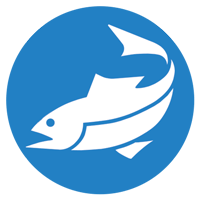Welcome to our new blog series which highlights the careers and challenges of female scientists!

Why Women DOING Science?
A new study led by New York University found that asking young girls to “do science” leads them to show greater persistence in science activities than does asking them to “be scientists”. Because these findings suggest encouraging girls to enter science by focusing on describing the activity of doing science rather than encouraging children to adopt scientist identities, we have titled this new blog series using action-focused language.
“Women Doing Science” highlights the exciting careers of a variety of female scientists. From whale biologists to engineers, these ladies have overcome gender stereotypes and work-life balance challenges to do the science that they love.
By highlighting the lives and experiences of female scientists, we hope to motivate more girls to pursue science careers. Women are still poorly represented in the sciences, particularly in Science, Technology, Engineering, and Math (STEM) careers. This issue of poor female representation in science, and particularly the attrition of women as they move up the ranks, is known as the “leaky pipeline”. Several challenges contribute to these leaks. Women often struggle to balance their family and work lives, particularly when travel and fieldwork are a large portion of their jobs. Many women lack financial and childcare support, particularly in academia, which is why so many women wait to secure a permanent position before starting a family. Family formation actually accounts for the largest leaks in the pipeline from graduate school to a tenure position.
Women also are more likely to seek part-time positions so that they can care for their families. Unfortunately, these positions often limit their career growth. Women also experience more cases of sexual harassment and discrimination than men while working in offices and in the field.
Implicit bias also leads to gender inequity. A good example of this is “office housework” which includes administrative tasks and menial jobs which are disproportionately given to women. Researchers discovered that women were expected to plan parties, take notes in meetings, and do other office housework tasks which undercuts their authority and devours time they could be spending on more valued tasks which lead to promotions.
With all of these challenges, why do women stay in this field?
Because we are hooked on the science!
We created “Women Doing Science” to show young people, especially girls, that it is possible to successfully do science and have a thriving career and personal life.
In this blog series, you’ll meet a variety of female scientists who will answer questions that we compiled from asking kids and college students what they wanted to know most about the lives and pursuits of women doing science.
If you have any additional questions for any of the scientists featured in this blog series, please send an email to info@azuraco.com.
We hope you enjoy viewing the blog series as much as we have enjoyed getting to know these Women Doing Science!
Women Doing Science: #1 Paula Olson ~ Marine Mammal Biologist
Women Doing Science: #2 Danielle Zaveta ~ Data Analyst & Fisheries Scientist
Women Doing Science: #3 Mandy Migura ~ Wildlife Biologist
Women Doing Science: #4 Jasmin Graham ~ Shark Scientist
Women Doing Science: #5 Calusa Horn ~ Endangered Species Biologist

